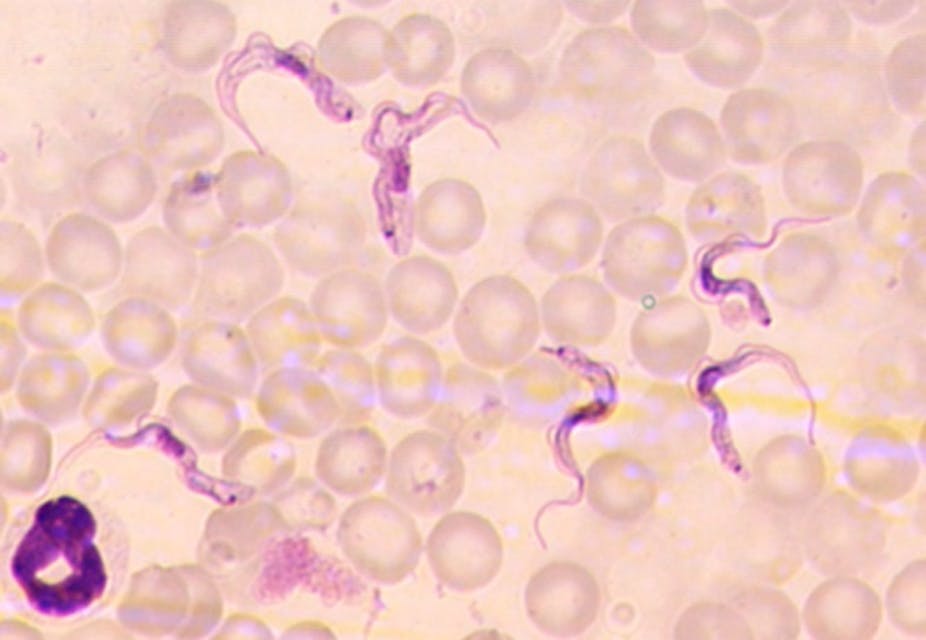There is no denying that humans think sex is important, but it also matters for microbes. Sex allows genes from two parents to be mixed, leading to new combinations of genes in the offspring.
In the past, many disease-causing protozoa were thought to reproduce by splitting in half with no genetic exchange, which is the common way that most microbes reproduce. But new results show they also use sex to swap genes between strains. Research into the sex lives of pathogens helps scientists understand how new strains of disease-causing microbes arise.
In the case of disease-causing pathogens, like the yeast Candida or the malaria parasite Plasmodium, sex can lead to several harmful genes being combined in one new daughter cell. For example, it is through sex that genes for drug resistance can spread among different pathogen strains faster than it would through asexual methods. Mixing up the genes may also give rise to new pathogen strains that the human population has less resistance to.
Tsetse and sex
Trypanosomes are the single-celled parasites that cause sleeping sickness in Africa and Chagas disease in Latin America. At the University of Bristol, my research group works on African trypanosomes, which are found in the blood and central nervous system of those afflicted with sleeping sickness and are carried by bloodsucking tsetse flies. These trypanosomes also cause the disease Nagana in African livestock.
Although we have known for a long time that trypanosomes have sex, we’ve never yet managed to catch them in the act – until now. The stumbling block has been that these microbes only have sex inside the tsetse fly and that has made it difficult to see what’s going on.
We developed a method to use fluorescent markers to tag individual trypanosomes, making them light up like tiny light bulbs. To tell the two parents apart, each is tagged with a different colour, red or green. This has the advantage that hybrid offspring have both colours, and look yellow.

We used this approach to see what the trypanosomes were getting up to inside the tsetse fly – and we found, as reported in Current Biology, a previously unknown type of cell that looked a bit like a sperm cell, swimming about by means of a long flagellum. Just like typical gametes (sperm or egg), these cells contained only half the normal amount of DNA.
Sex in colour
Trypanosome gametes look and behave the same, rather than being totally different like sperm and eggs. They were seen intertwining their long flagella and gyrating together. We think this behaviour is the prelude to cell fusion, since we also found yellow hybrid trypanosomes with them.

Our new results not only revealed the previously unseen details of trypanosome mating, but also suggested that sex is not an optional or rare part of this protozoan’s lifecycle and probably occurs quite frequently. This has implications for the ability of these trypanosomes to swap genes around.
For example, we know that just a single gene – the SRA gene – helps trypanosomes in East Africa to infect humans rather than other animals. This means that sex can generate new strains of human infective trypanosomes by transferring the SRA gene to a different genetic background.
Trypanosomes mate inside the tsetse fly, but having sex in the insect carrier of disease isn’t unique to them. For the malaria parasite Plasmodium, for example, sex happens every time the parasite gets carried from person to person by a bloodsucking mosquito and is part of the microorganism’s life cycle.
For the trypanosome though, there is a twist. Tsetse flies feed on our blood, which goes straight into their gut. But to reach the human host, any trypanosomes present in the bloodmeal have to reach the insect’s salivary glands, so they can be squirted into the next victim along with the anti-coagulant saliva. For a tiny microbe, this is a long and tortuous journey through the body of the fly, and few survive it.
Those that do are arguably the fittest, and it is these trypanosomes that get the chance to have sex inside the salivary glands. It may be months or years before trypanosomes in the bloodstream of a human suffering from sleeping sickness get picked up by a tsetse fly, so maybe this is nature’s way of ensuring that only the trypanosomes that are still capable of reaching the salivary glands get to have sex.

